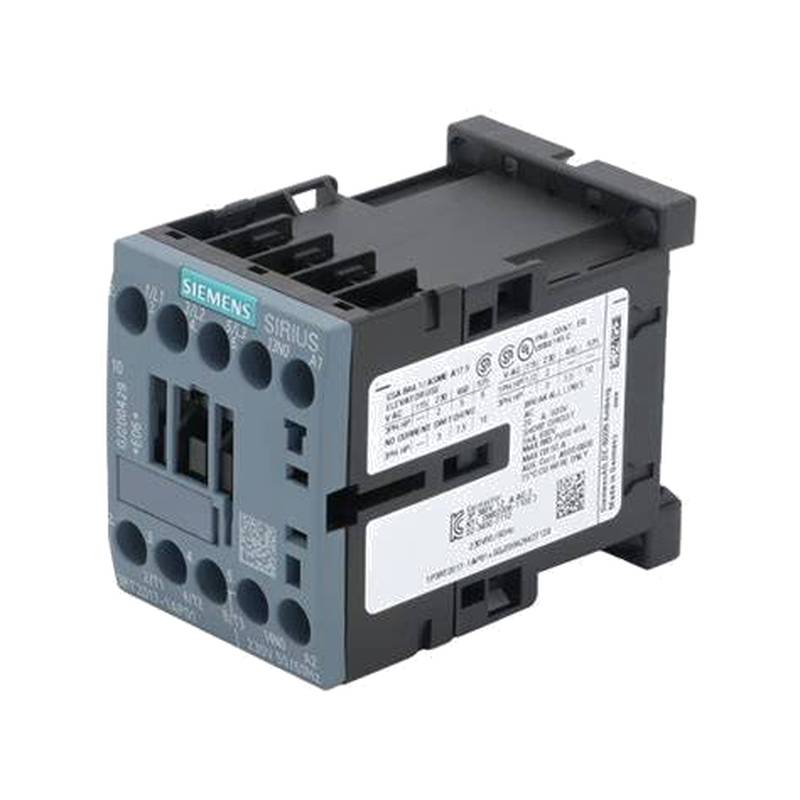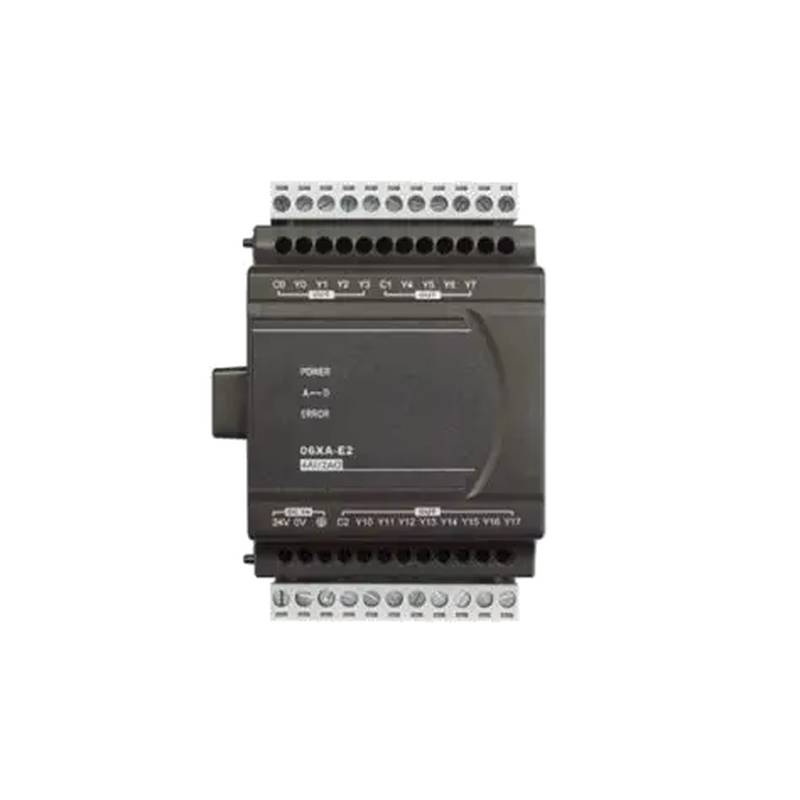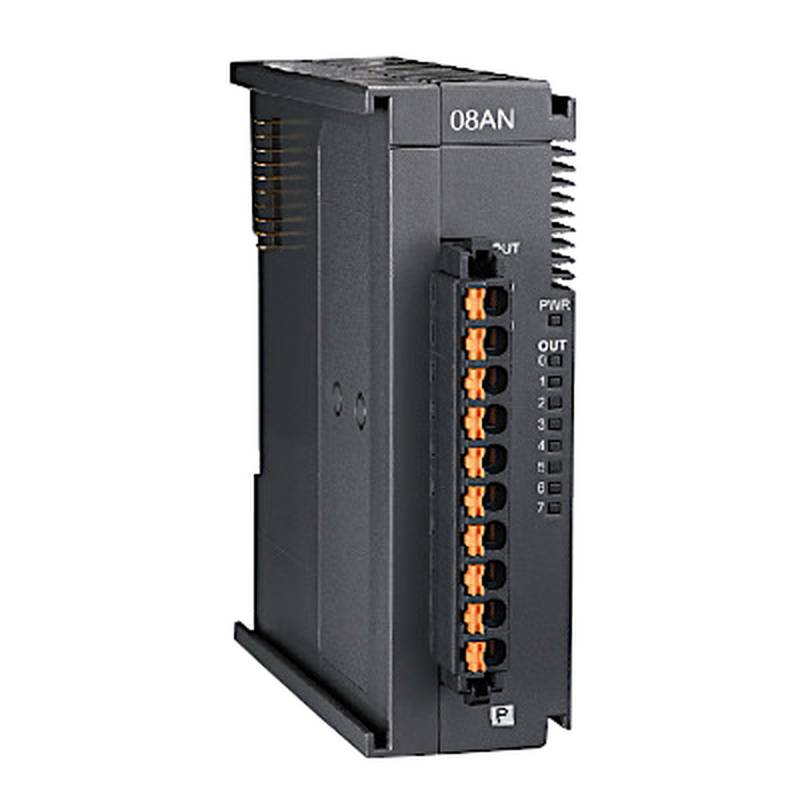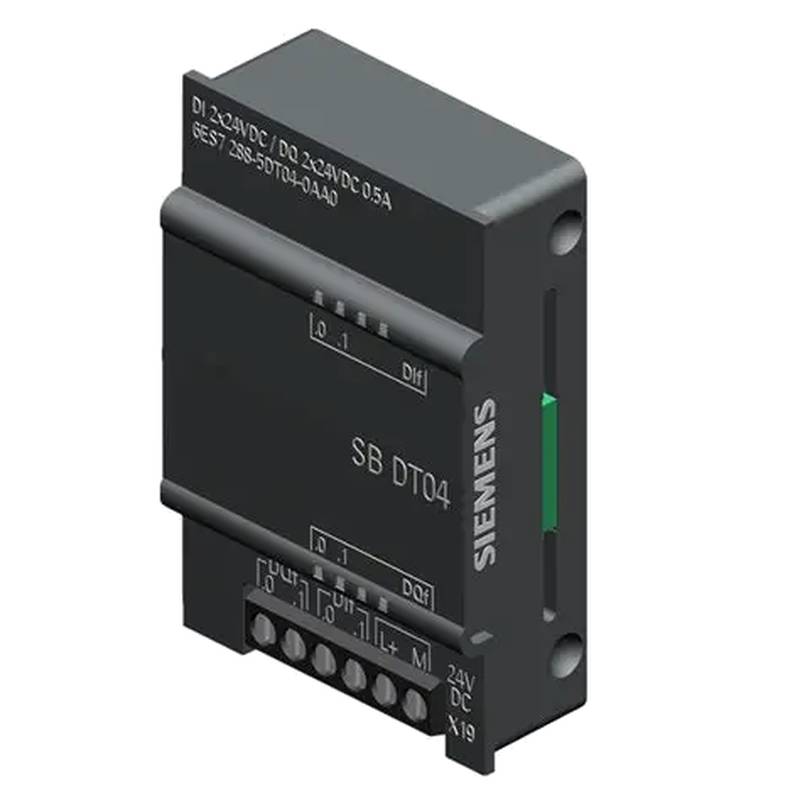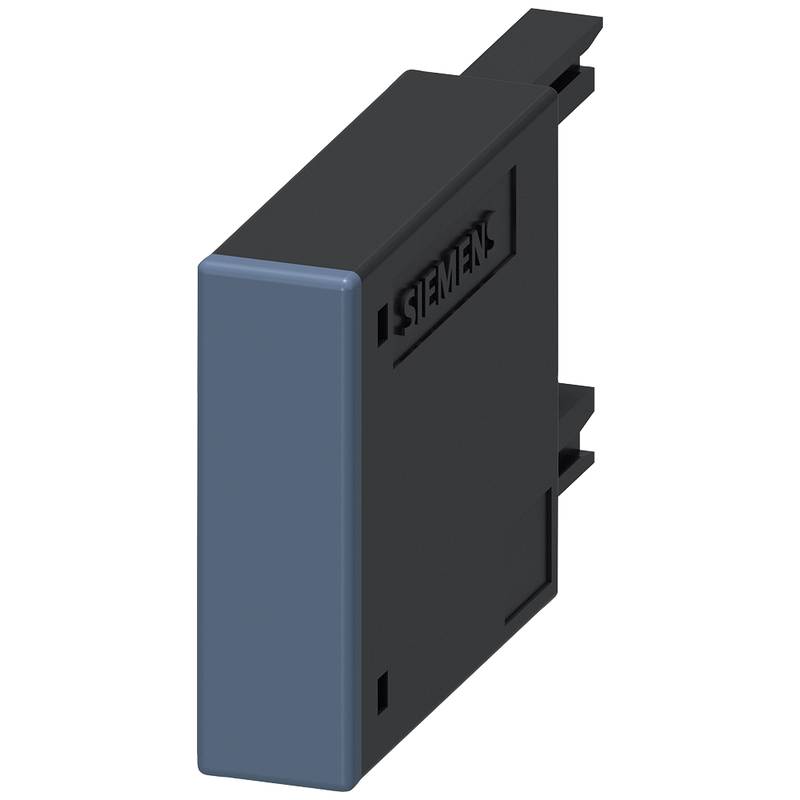
The Delta DVP32ES200TC is a highly capable, cost-effective PLC designed for a wide range of industrial automation tasks. Boasting enhanced communication capabilities and robust control functions, this unit offers exceptional value for applications requiring reliable and efficient automation. Its compact design, extensive I/O, and support for various communication protocols make it a versatile solution for machinery control, process automation, and building automation.
Product Specifications
| Feature | Specification |
| :--------------------- | :---------------------- |
| Model | DVP32ES200TC |
| I/O Points | 32 (20 Digital Input, 12 Digital Output) |
| Output Type | Transistor (Sink) |
| Power Supply | 24 VDC |
| Program Capacity | 16k Steps |
| D1/D2 Registers | 10k Words |
| Communication Ports| RS-232, RS-485 |
| Max. Instructions | 100 |
| Max. I/O Expansion | 512 points |
| Operating Temp. | 0°C to 55°C |
Core Features & Market Positioning
The Delta DVP32ES200TC distinguishes itself through its inherent cost-effectiveness without compromising on essential automation functionalities. Its enhanced communication features, particularly the integrated RS-232 and RS-485 ports, allow for seamless integration into existing SCADA systems or direct communication with HMIs and other intelligent devices. This dual-port capability is a significant differentiator, simplifying networking configurations and reducing the need for external communication modules in many standard applications. The DVP-ES2 series, to which this model belongs, is recognized for its reliability and robust performance in demanding industrial environments, positioning the DVP32ES200TC as a go-to choice for small to medium-sized automation projects where precision and dependable operation are paramount.
Key Application Scenarios
This versatile PLC finds extensive use in diverse industrial sectors. It is commonly deployed in discrete manufacturing for controlling packaging machinery, injection molding machines, and conveyor systems. In the food and beverage industry, it manages batch processes and filling operations, ensuring product consistency and efficiency. Building automation also benefits from the DVP32ES200TC, controlling HVAC systems, lighting, and access control. Its ability to handle complex logic and communicate effectively makes it ideal for standalone machine control applications where a compact yet powerful automation solution is required.
Practical System Integration Guidance
Integrating the Delta DVP32ES200TC into an automation system is straightforward. The unit supports standard DIN rail mounting, simplifying panel installation. Wiring involves connecting the 24 VDC power supply and terminating digital input and output signals according to the device's terminal layout. For communication, the RS-232 port is typically used for direct PC connection during programming or for short-distance HMI communication, while the RS-485 port is ideal for multi-drop networks over longer distances. Programming is typically performed using Delta's WPLSoft software, which supports ladder logic, instruction list, and structured text, enabling engineers to develop control programs efficiently.
Operation and Risk Mitigation
Safe and efficient operation of the DVP32ES200TC hinges on adherence to proper installation and programming practices. It is crucial to ensure that all wiring is correctly insulated and grounded to prevent electrical hazards and interference. When programming, implementing proper error handling routines is essential for robust operation. For instance, monitoring input status and output feedback can prevent machine damage or product defects. While specific fault codes are detailed in the user manual, common issues like power supply fluctuations or communication timeouts should be anticipated and addressed through well-designed control logic and regular system checks.
Scalability & Long-Term Value
The DVP32ES200TC offers excellent scalability, allowing for system expansion as automation needs grow. It supports various Delta I/O modules, enabling the addition of more digital or analog inputs/outputs to the base unit. This flexibility ensures that the PLC can adapt to evolving production requirements without necessitating a complete system overhaul. Furthermore, its robust communication capabilities facilitate integration with modern Industrial Internet of Things (IIoT) platforms and Industry 4.0 initiatives. By leveraging its communication ports, the DVP32ES200TC can be a key component in smart manufacturing environments, contributing to data acquisition and remote monitoring, thus enhancing long-term operational value.
Frequently Asked Questions
What is the primary advantage of the DVP32ES200TC?
The DVP32ES200TC offers a strong balance of performance and affordability for industrial automation. Its enhanced communication features simplify networking needs.
It provides robust control capabilities suitable for a wide array of machine and process applications. The unit's compact footprint saves valuable panel space.
This PLC is an excellent choice for small to medium-sized projects requiring reliable operation without an excessive budget.
How do I connect the DVP32ES200TC to a PC for programming?
Connect your PC to the PLC's RS-232 port using a compatible serial cable. Ensure your PC has the necessary drivers installed.
Use Delta's WPLSoft software to establish communication and upload or download programs. Verify the communication settings match on both the PC and the PLC.
Double-check the COM port selection in WPLSoft and confirm the PLC's communication parameters (baud rate, parity, data bits) are correctly configured.
Can the DVP32ES200TC control stepper motors?
Yes, the DVP32ES200TC can control stepper motors through its high-speed pulse output functions. You will need appropriate stepper motor drives.
Configure the PLC's pulse output instructions (e.g., PLS, PLSF, etc.) to generate the required pulse trains for motor positioning. Proper calculation of pulse counts per revolution is crucial.
Ensure your PLC's firmware supports the specific motion control instructions you intend to use, and consult the Delta PLC programming manual for detailed examples.
What are the typical applications for the DVP32ES200TC?
This PLC is widely used in packaging machinery and assembly lines for precise automation control. It's also common in material handling systems, like conveyors.
In process industries, it handles batch control and monitoring for smaller, dedicated units, such as pump or fan controls. Building automation also benefits from its capabilities.
Its versatility makes it suitable for standalone machine automation, offering reliable I/O and communication for various operational tasks.
How do I expand the I/O of the DVP32ES200TC?
The DVP32ES200TC supports expansion modules from Delta's DVP series. These modules connect directly to the PLC's expansion bus.
You can add more digital inputs, digital outputs, or analog I/O modules to meet increasing control demands. Check module compatibility with the ES2 series.
Refer to the Delta DVP series expansion module catalog to select the appropriate modules and consult the PLC's manual for connection and configuration details.
What communication protocols does the DVP32ES200TC support?
The DVP32ES200TC natively supports RS-232 and RS-485 serial communication protocols. This allows for versatile networking.
It can be configured to communicate with various serial devices, such as HMIs, VFDs, and other PLCs, using protocols like Modbus RTU.
For other industrial Ethernet protocols, optional communication modules might be available, or data can be exchanged via serial gateways.
What is the difference between DVP32ES200TC and other DVP-ES2 models?
The primary difference lies in the output type and specific I/O count. The ES200TC model features 12 transistor (sink) outputs.
Other DVP-ES2 models might have relay outputs or a different combination of digital inputs and outputs. Always check the exact model number for specifications.
Ensure the output type (transistor vs. relay) matches your load requirements for proper device interfacing and longevity.
How can I troubleshoot communication errors with the DVP32ES200TC?
Verify all physical wiring connections for the RS-232 or RS-485 port are secure and correct. Check for damaged cables.
Confirm communication parameters (baud rate, parity, stop bits) match between the PLC and the communicating device. Incorrect settings are a common cause of errors.
Utilize the PLC's built-in diagnostic functions or status bits within your program to identify communication issues. Check the manual for specific error codes.
What are the power requirements for the DVP32ES200TC?
The DVP32ES200TC requires a stable 24 VDC power supply for operation. Ensure the supply meets the current demands of the PLC and its I/O.
Proper grounding and surge protection are essential to prevent damage to the PLC from electrical noise or transients. Adhere to wiring best practices.
Always refer to the PLC's power supply specifications in the manual to ensure correct voltage and sufficient current capacity for the intended application.
Is the DVP32ES200TC compatible with older Delta PLC systems?
The DVP32ES200TC is part of the DVP-ES2 series and is generally compatible with other DVP series modules and software. Compatibility with very old systems may vary.
For integration into existing Delta projects, verify communication protocols and data addressing schemes. Newer PLCs often offer more advanced features.
Consult Delta's product documentation or technical support to confirm specific compatibility with older Delta hardware or software versions.

















